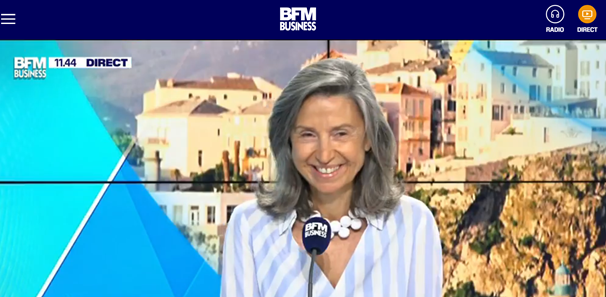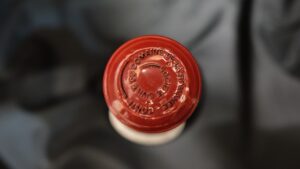
As temperatures rise, wine lovers are turning to their summer bottles, their lighter reds, crisp whites and refreshing rosés. The warmer months have us dreaming of far-flung, picturesque destinations, so where better to look than Corsica? Do wines from the Ile de la Beauté make for a good investment? That’s what we’re going to find out, with expert advice from Angélique de Lencquesaing, co-founder of iDealwine and specialist in the wine auction market.
Corsica is famous for its landscape, its weather, its culture, its beaches…but what about its wine?
Corsica was loved by the Greeks all the way back in the 4th century BC, and its viticultural history is even older. The island boasts a variety of soils and terroirs, schist-leaning in the north, with granite in the south-west, and a more chalky profile in the centre and the east. This land lends itself well to the growing of characterful, local grape varieties such as Niellucciu in Patrimonio (North), Sciacarellu in Ajaccio (South), and Vermentinu, also known as Malvoisie, which is used to make white cuvées.
Corsican vineyards also fell ill with the phylloxera epidemic of the 20th century, as well as suffering economic crisis and the effects of war. It had always been home to artisanal, family-based viticulture, until the 1960s when mass production took hold. However, it has been the life-long project of certain growers, like the Abbatucci family in Ajaccio, to bring back local grape varieties, focusing on quality rather than quantity. Their efforts led to a resurgence of excellent production in the 1980s, with many superb estates now known to wine lovers all over.
What do Corsican wines make up in sales? Do they have a place in the auction market?
Corsica has a small wine-producing area, and its vine land has significantly decreased in the last fifty years, from around 30,000 hectares in the 60s to 7,000 hectares today. It makes up 1% of French wine production. This is what we see at auction, as Corsica represented 1.3% of volume sold at iDealwine last year, or 531 bottles auctioned. It’s a tiny proportion of the market, but this means there are some gems for those who know where to look.

Corsican wine is made in all three colours, red, white, and rosé. Are they all worth the same at auction?
Usually, it’s red wine that dominates by a large margin when it comes to auction sales. In 2024, all countries and regions included, red wine made up 70% of volume auctioned at iDealwine. What’s interesting is that Corsican wine saw more of an equal spread, with 44% of sales taken by red wine, 44% by white, and rosés and sweet wines making up the rest. The variety we see in the Corsican terroir makes their red wines just as attractive as the whites, even if the former tend to be worth more due to their better ageing capacity.
Are prices more attractive for Corsican wines, or do they reflect the rarity of the island’s production?
At auction, prices for Corsican wine are clearly lower on average. Whilst the overall average hammer price last year (2024) at iDealwine was €149, Corsican wine sold for an average of €56, with reds coming in a little bit higher – €69 – than the €51 average for the whites.
You mentioned Ajaccio, which is one of the appellations that stands out at auction.
Ajaccio is home to three of Corsica’s most sought-after names, the first of which is Vacelli. The Ile de la Beauté’s star grower, Vacelli was founded in the 1960s and is best-known for its Granit cuvée. Even rarer is the Granit 174 – referring to the parcel’s surface area – which is made from grapes grown on very old Sciaccarellu vines. Six of these went under the hammer last year, with the highest bid reaching €338 for the 2020 vintage, a sale that puts this domaine on top for the region. We also find Domaine Abbatucci in Ajaccio, a property whose biodynamic 2021 Monte Mare cuvée, also a Sciaccarellu wine, went under the hammer for €158. Equally flying the flag for Corsica’s biodynamic wine is U Stilicionnu, a winery featured in the region’s Top 10 producers.

In the south of the region, Figari is another area of note.
Yes, it’s an area that’s been put under the spotlight by Yves Canarelli, with his estate of the same name. This is the second most sought-after wine grower in Corsica. We’re talking about another biodynamic producer with land well-suited to regional grape varieties, and some of the cuvées are aged in amphora vases. Rarest of all is their Tarra d’Orazi, a cuvée made from non-grafted vines, in other words, grapevines that weren’t affected by the phylloxera outbreak. This blend of Cinsault, Niellucciu and Sciaccarellu grapes has only once gone under the hammer at iDealwine, in its 2018 vintage, which went for an exceptional winning bid of €263.
And in the north of the island, we find Patrimonio, which is a star winegrowing region, right?
Not only does Patrimonio’s vineland take your breath away, but it is also represented by four of Corsica’s most sought-after producers. There’s Mireille Giudicelli, with superb cuvées in both colours, as well as Antoine Arena, Jean-Baptiste Arena, and Yves Leccia’s E. Croce estate.
It’s worth noting that there are inland vineyards on the island, too, such as Domaine Vico, which was bought in 1987 by the Venturi family, who isolated certain terroirs to create their Clos Venturi. The two wineries still exist together and both get some top bids at auction.
As it’s the summer, we have to talk and rosés and whites. They’re usually considered drinking wines, but do they have potential as investments?
There are some rosés that sell particularly well, and they go for significant prices directly from the property, but their lesser ageing capacity means that we find them less often on the auction market. However, sweet white wines like Muscat cuvées from the Cap Corse are rare and highly sought-after. Antoine Arena’s version went for €86 in its 2006 vintage, and Mireille Giudicelli has an exceptional Cap Corse Muscat that sold for €56 in its 2012 vintage.
You mentioned biodynamic wine, and Corsica is also known for its organic winemaking.
Yes, the Corsican climate is perfect for winegrowers who want to focus on environmentally friendly methods. Corsica’s Top 10 most sought-after producers at auction are all certified organic, and seven among them have converted to biodynamics.
Natural wine has also reached Corsican shores, with growers working to greatly decrease the amount of sulphur they use in their wines. We see this at Abbatucci, U Stilicionnu, Giudicelli, Clos Venturi, and Antoine Arena.
With just a 1% share in auction sales, Corsican wine is an investment to diversify your collection, then?
Yes, when we look at the overall share of auction sales by region, we get a good idea of how our own investment cellars might look. Corsican wines are an excellent way to get more variety in your collection, especially with their local grapes, high-quality production, and the island’s propitious growing climate. Keep an eye out, as wine lovers tend to keep hold of their Corsican bottles, hence their rarity on the secondary market.
These wines still make for a clever investment option if you choose carefully; this is a niche region with cuvées selling for accessible prices, especially when you consider the quality of the produce. The wines with a better capacity for maturing will keep some surprises in store for later on, whether that’s in terms of taste or in terms of value.
Browse iDealwine’s Corsican selection



